Starling Murmur 29 Factory
Originally posted on October 10, 2019 at 0:54 amBy Eric McKeegan
While an English bicycle company building steel frames isn’t that noteworthy, Starling stands out with a number of full-suspension bikes, including a single-speed-specific downhill bike. These bikes have an unexpected foundation, Starling founder Joe McEwan spent about 20 years as an aerospace engineer, mostly testing carbon fiber structures.
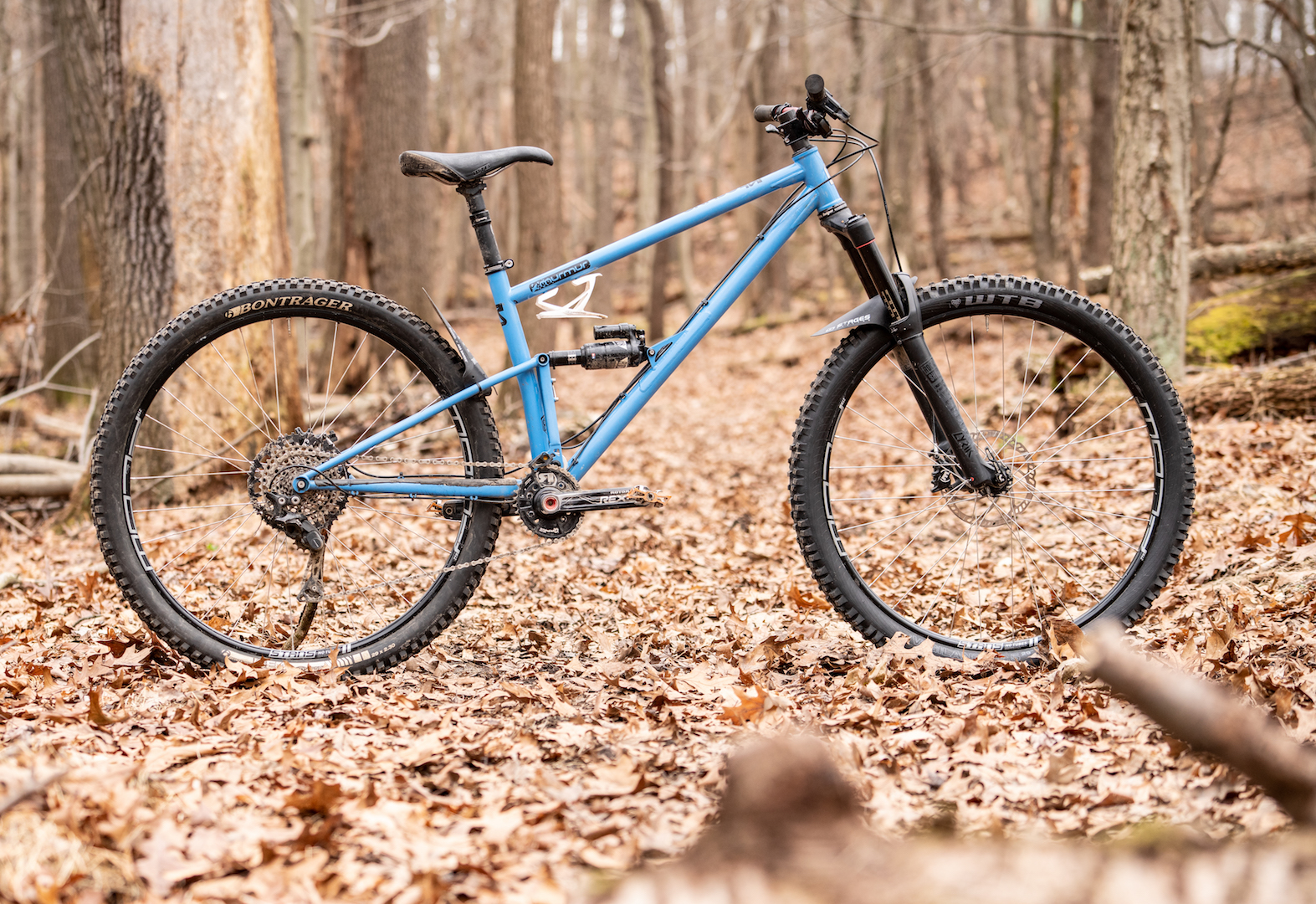
So, how does a guy who helped Airbus build planes out of carbon end up with a steel bike company? McEwan started Starling in his shed, and steel is certainly shed-friendly from a standpoint of ease of construction with basic tools and limited space. But McEwan has some ideas about ride quality that go against the NOW 11.2 PERCENT STIFFER! marketing messaging that pervades the industry these days. Those ideas line up with some of steel’s material qualities.
The Bike
This bike isn’t made in a shed, or in Starling’s newer and bigger workshop; this bike is built in Taiwan. U.K.-made Starlings offer custom geometry and brazed construction, while factory bikes like this one have three set sizes and welded construction. Both options offer numerous paint and decal options.
The Murmur 29 Factory has 140 mm of linkage-free single-pivot suspension travel, mated with a 150 mm travel fork. Taking a look at all the specs listed above, the numbers feel more like the new crop of super enduro bikes, like the Pivot Firebird 29 or Scott Ransom, but executed on a chassis with 20 mm less travel.
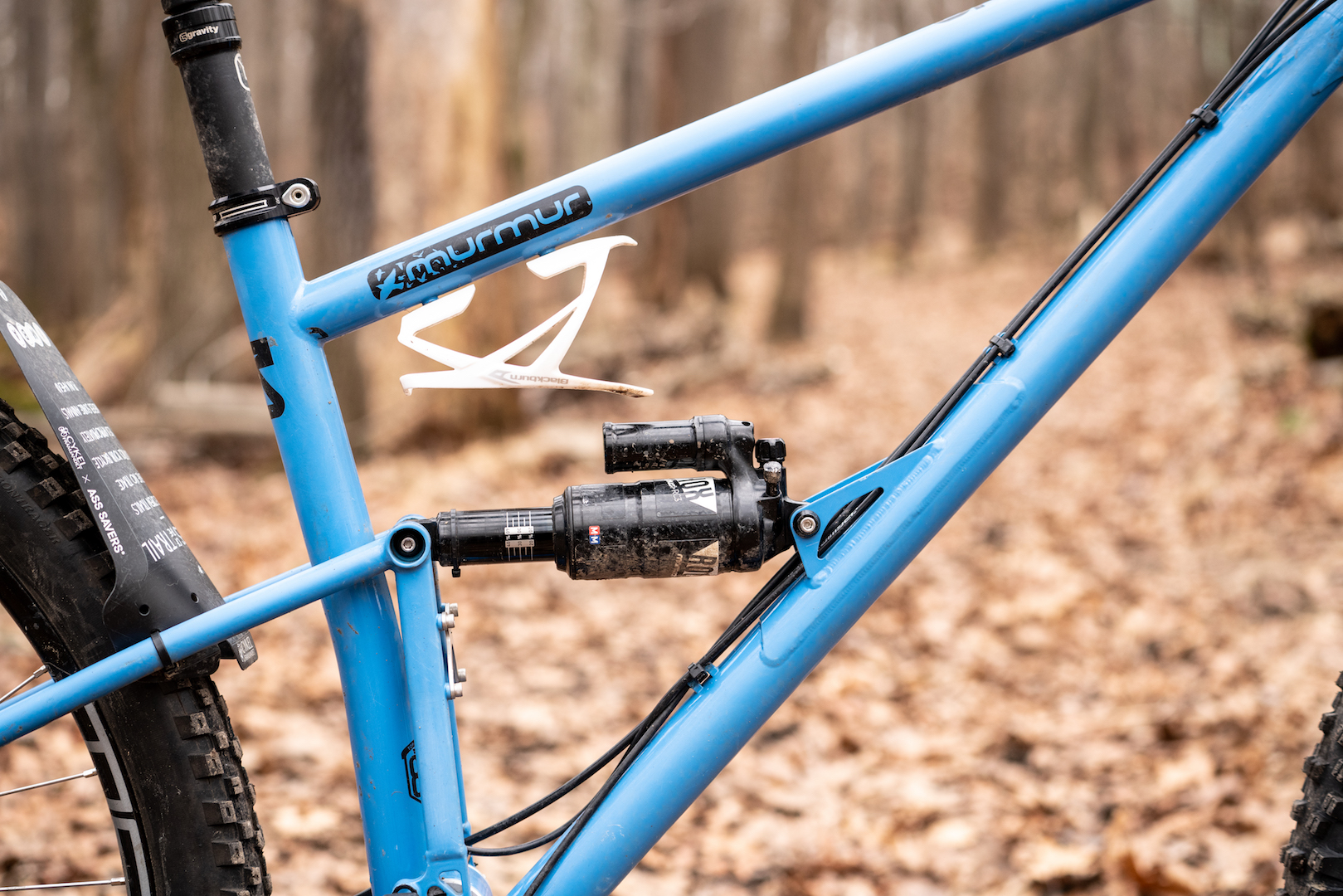
While 32 pounds isn’t light, considering the build this bike showed up with (Aggressor Doubledown rear tire, Lyrik fork, no carbon bits), I was honestly surprised it wasn’t heavier. Considering even high-end carbon enduro bikes with standard tires and carbon wheels often barely break the 30-pound barrier, I suspect carbon frame weights are creeping up as we ask our mountain bikes to handle higher and higher levels of abuse. Much like stiffness, low weight seems to be a stat that is used to denote higher-performance or better ride quality with little to no data to back it up.
The frame is svelte-looking and simple, and there are nice touches all around. The bolt-on swing arm brace has tiny starling cutouts, the top and down tubes are gusseted at the head tube and the water bottle mount is tucked under the top tube where it meets the seat tube. There is also an effective upper chain guide and nicely machined suspension hardware. Nothing extra and nothing missing.
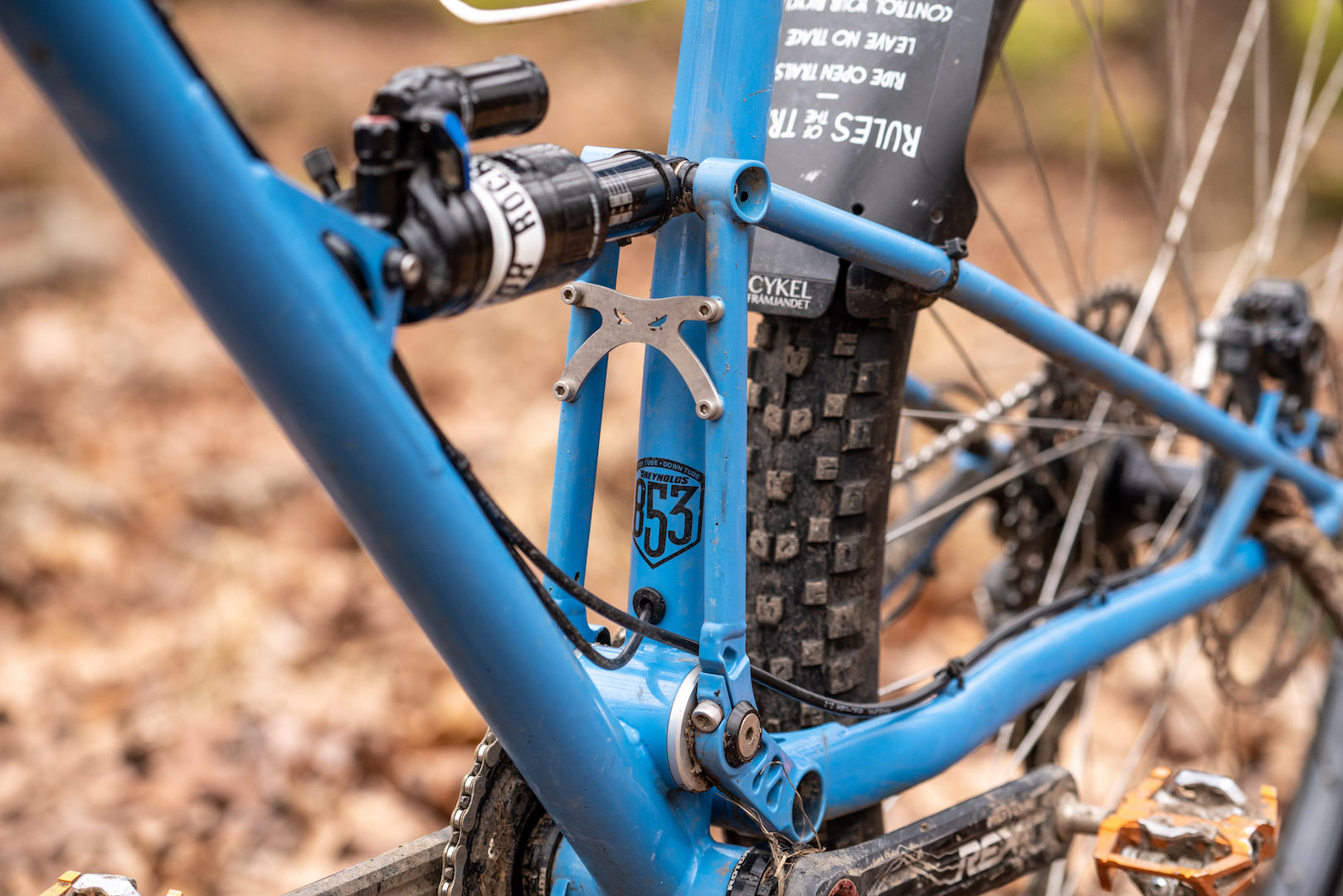
The Ride
I’m agnostic when it comes to frame material. Fit, geometry and component selection have a greater impact on ride feel than frame material does. Still, something about the thin tubes and simple layout pulled at my jaded heartstrings.
But it wasn’t all starry-eyed trail blasting and post-ride cleaning and cuddles. A wheelbase that sits at 49.6 inches is downhill bike territory: A large Santa Cruz V10 29er is only a couple tenths of an inch longer. And even with a reach number that sounds huge, the cockpit felt short while seated. The first few rides on this combo of long and short had me wondering what I’d gotten myself signed up for. The long chainstays threw off my timing, and turning required a lot more dip to my hip than I wanted to deal with.
But as the sloppy season rolled in, the Murmur and I found more common ground. The long wheelbase and long stays put me smack dab in the middle of the bike. The longer chainstays help to weight the front tire in turns, something that can be an issue for slack bikes with short stays on flatter terrain. Once I started to trust the bike and ride it more from the center, I realized how easy it was to turn. The Murmur inspires hard cornering. Or sloppy cornering, or staring a corner carving and finishing up with a sloppy drift. In greasy mud, I swear this bike contaminated my DNA with some cornering proteins from Danny Hart. Often, just when I thought I had lost it, the Murmur seemed to somehow push me back on track with a gentle “you’ve got this, mate.”
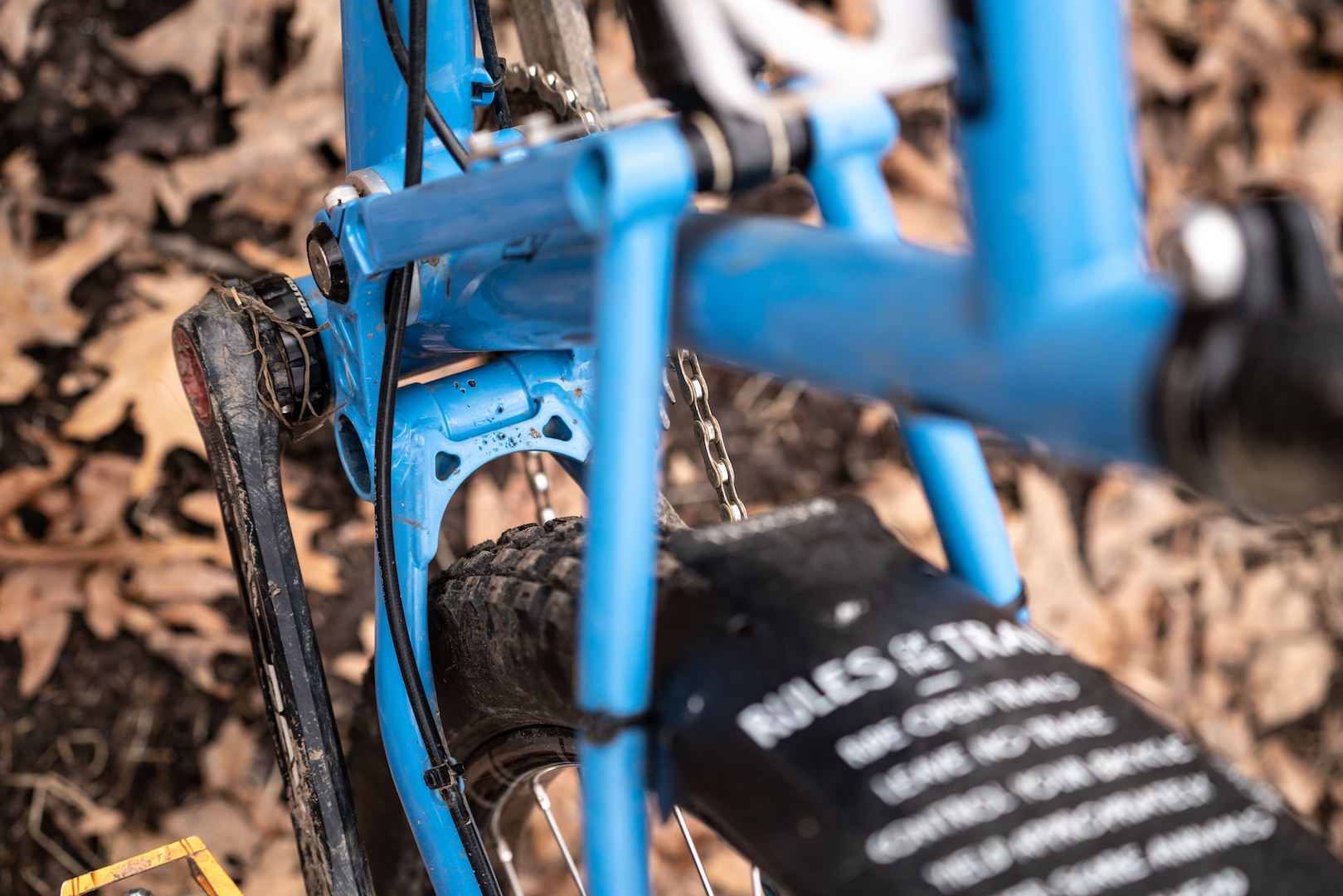
The simple suspension pedaled well enough seated to not really need the platform lever, and it even fared decently standing and pedaling. Set up with 30 percent sag felt like it went through the travel too easily, so I added a bit more air and found the chassis to be stable and poppy, which matched up well with the drift king personality. This bike won’t gobble up terrain like some of its longer travel competition, but it never loses its predictability or composure. Unlike the last single-pivot bike I rode regularly (final generation Santa Cruz Heckler), there was no big hammock of mid-stroke wallow, just predictable suspension action and no harsh bottom out.
The Murmur doesn’t ride like a modern stiff carbon bike. The thin steel tubes flex, particularly in the rear end, but my brain used positive descriptors for this while riding, such as compliance and springy rather than negative words like flexy and noodly.
Conclusion
This bike isn’t for everyone. It is going to feel odd to most riders, regardless of what you’ve been riding. The new school geometry, the single pivot and the steel frame’s je ne sais quoi combine to make this the most interesting bike I’ve ridden in recent memory. Fair warning: If you have lots of flatter, rocky, pedal-y terrain, the long wheelbase and low bottom bracket are going to make for a frustrating time of pedal strikes and excessive body English. If blasting out of berms is your idea of a good time, the long stays and frame flex might not be your thing either.
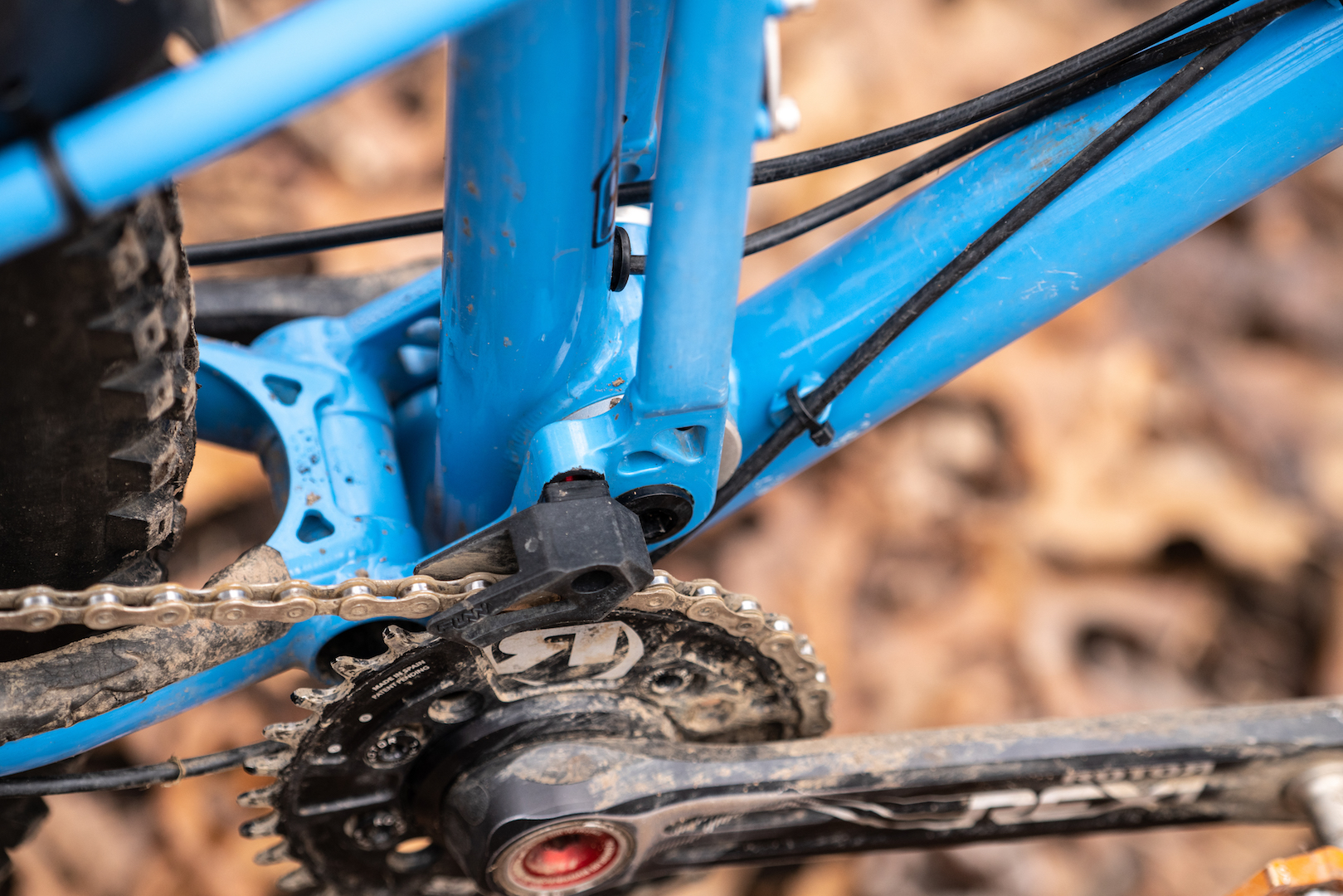
This bike wasn’t really what I expected, but it got me thinking, riding and scheming in ways that most modern bikes do not. It would have been easy to dismiss the Murmur as not well-suited to my local terrain or riding style, but instead, it reminded me to keep an open mind and made me realize how much speed I was leaving on the table in corners. I’m sad to send the Murmur away. I could use a simple, sturdy companion like this in my life.
Tester: Eric McKeegan
Age: 44
Height: 5’11”
Weight: 165 lbs.
Inseam: 32”
Price: $2,140 (frame and shock)
Sizes: M, L (tested), XL
Online: starlingcycles.com
Reach: 19.1”
Stack: 24.5”
Top Tube: 24.7”
Head Tube: 65°
Seat Tube: 77°
BB Height: 13”
Chainstays: 17.5”
Weight: 32.1 lbs.